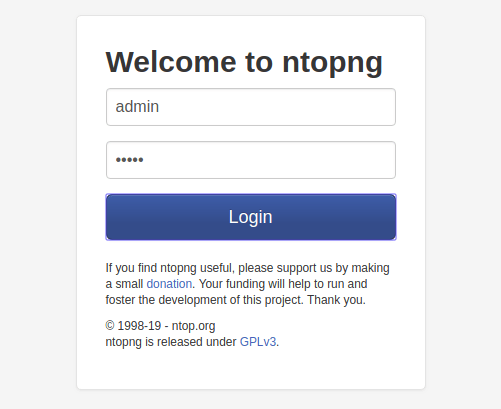
In this tutorial, we will show you how to install Ntopng on AlmaLinux 8. For those of you who didn’t know, Ntopng (short for ntop next generation) is a modernized version of the classic ntop tool. It is engineered to be lightweight yet powerful, offering comprehensive network traffic analysis with minimal resource consumption. Its standout features include:
- Real-Time Monitoring: Ntopng provides live insights into network traffic, enabling administrators to detect unusual patterns or bottlenecks instantly
- Protocol Analysis: It supports a wide range of protocols such as TCP, UDP, HTTP, and SMTP, giving detailed visibility into network behavior
- Flow-Based Analysis: By leveraging NetFlow, sFlow, and IPFIX protocols, it delivers granular traffic data without requiring full packet captures
- Anomaly Detection: Built-in alerting mechanisms notify users of suspicious activities or potential security threats in real-time
- Cross-Platform Compatibility: While optimized for Linux, Ntopng also runs on Windows and macOS, making it versatile for diverse environments
Moreover, Ntopng’s web-based interface simplifies network visualization by presenting data through intuitive graphs and dashboards. This makes it easier to track bandwidth usage, identify high-traffic devices, and optimize resource allocation—all from a single interface.
This article assumes you have at least basic knowledge of Linux, know how to use the shell, and most importantly, you host your site on your own VPS. The installation is quite simple and assumes you are running in the root account, if not you may need to add ‘sudo‘ to the commands to get root privileges. I will show you the step-by-step installation of the Ntopng network monitor on an AlmaLinux 8. You can follow the same instructions for Fedora, RHEL, CentOS, and Rocky Linux distributions.
Prerequisites
- A server running one of the following operating systems: AlmaLinux 8 or Rocky Linux 8 and RHEL-based Linux.
- It’s recommended that you use a fresh OS install to prevent any potential issues.
- SSH access to the server (or just open Terminal if you’re on a desktop).
- A
non-root sudo useror access to theroot user. We recommend acting as anon-root sudo user, however, as you can harm your system if you’re not careful when acting as the root.
Install Ntopng on AlmaLinux 8
Step 1. First, let’s start by ensuring your system is up-to-date.
sudo dnf clean all sudo dnf install epel-release sudo dnf install http://rpms.remirepo.net/enterprise/remi-release-8.rpm sudo dnf config-manager --set-enabled powertools sudo dnf update
Step 2. Installing Ntopng on AlmaLinux 8.
By default, Ntopng is not available on the AlmaLinux 8 base repository. Now we run the following command to add the Ntop packages repository to your system:
wget https://packages.ntop.org/centos-stable/ntop.repo -O /etc/yum.repos.d/ntop.repo
Then, update the repository and install Ntopng by running the following command:
sudo dnf update sudo dnf erase zeromq3 sudo dnf install pfring-dkms n2disk nprobe ntopng cento pfring-drivers-zc-dkms
Finally, run the community version of Ntopng, edit the configuration file, /etc/ntopng/ntopng.conf, by running the command below:
sed -i 's#-G=/var/run/ntopng.pid#-G=/var/run/ntopng.pid \\n--community#' /etc/ntopng/ntopng.conf
After the installation is complete, now enable Ntopng (to start automatically upon system boot), start, and verify the status using the commands below:
sudo systemctl start ntopng sudo systemctl enable ntopng sudo systemctl status ntopng
Step 3. Configure Firewall.
Allow the firewall to port 3000 and reload it with the following commands:
sudo firewall-cmd --permanent --add-port=3000/tcp sudo firewall-cmd --reload
Step 4. Accessing Ntopng Web Interface.
Once successfully installed, open your web browser and access the Ntopng using the URL http://your-IP-server:3000. You will be redirected to the following page:

Provide the default username and password as admin/admin and click on the Login button.
Congratulations! You have successfully installed Ntopng. Thanks for using this tutorial for installing the Ntopng web-based traffic monitoring application on your AlmaLinux 8 system. For additional help or useful information, we recommend you check the official Ntopng website.